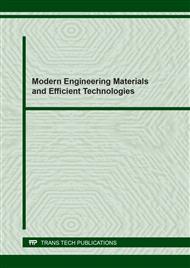p.166
p.172
p.179
p.190
p.197
p.203
p.211
p.222
p.232
Optical Processing Damage Reduced by Polishing Technology with Material Removal in Elastic Mode
Abstract:
Surface/subsurface processing damage on optical component can severely affect its surface mechanical properties and cause its resistance to external deformation to deteriorate. At the same time, the processing damage will also affect the surface quality. The surface processing defects are the main reasons leading to the decrease in the laser induced damage threshold in high-density laser system. In this paper, the damage formation mode and morphology of the traditional optical processing methods based on the mechanical removal in brittle and plastic modes are evaluated, then the traditional processing damage model is established accordingly. The polishing technology with material removal in elastic mode is proposed based on the damage generation mechanism. In the elastic mode, it is impossible to form the material removal by mechanical action due to the inability to overcome the yield limit of the material, thus it is necessary to introduce a weakening of the chemical reaction to reduce the bonding force of the surface layer of the optical element, using less force to form the material removal to ensure the disturbance of the basic material is controlled. The mechanism of material removal in elastic mode was analyzed. The polishing process was realized by elastic hydrodynamic ultra-smooth polishing and nano-particle jet polishing. The performance of the elastic polishing process was analyzed. The experimental results show that the elastic polishing processing method can effectively remove surface damage and achieve effective control of processing damage.
Info:
Periodical:
Pages:
203-210
Citation:
Online since:
May 2022
Authors:
Price:
Сopyright:
© 2022 Trans Tech Publications Ltd. All Rights Reserved
Share:
Citation:



